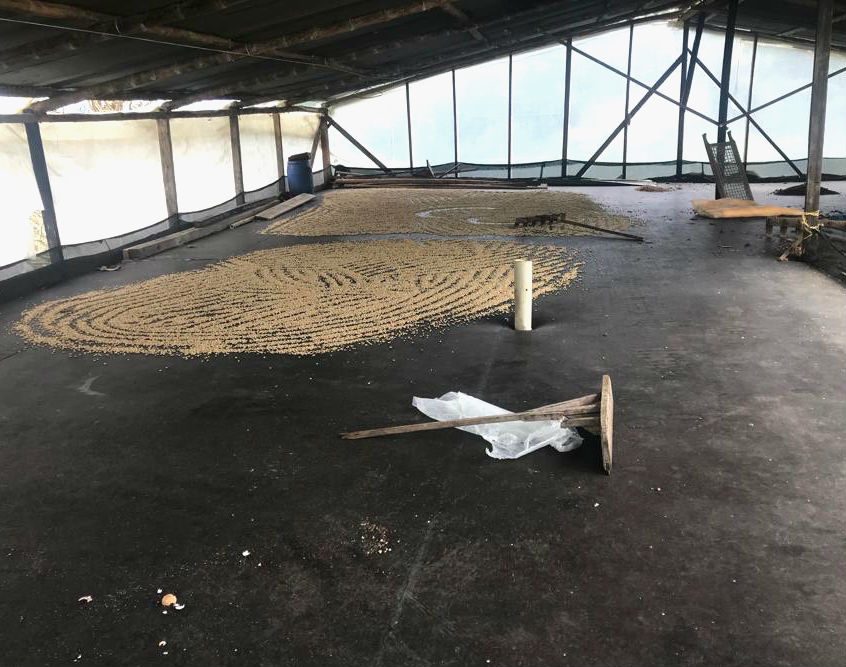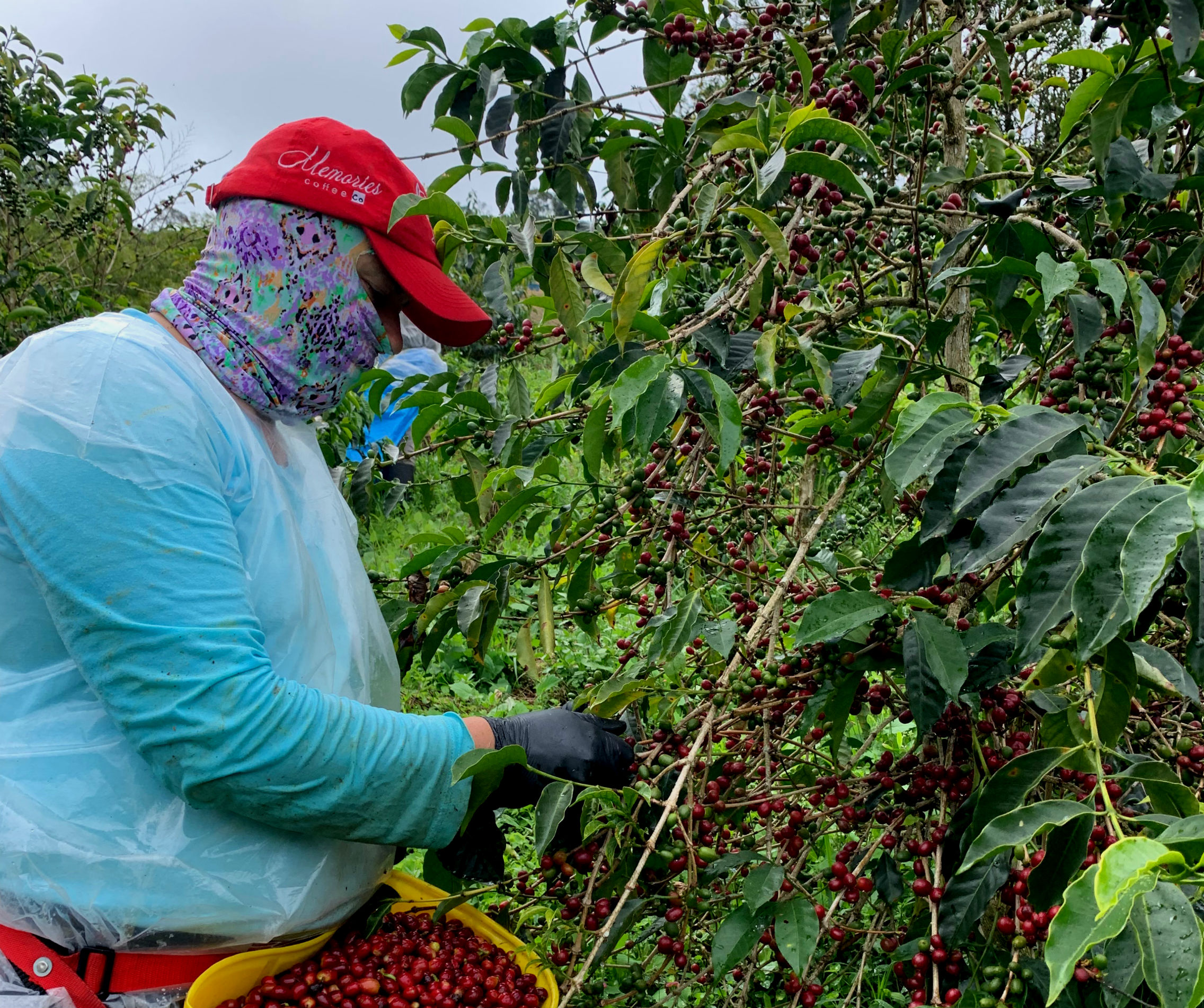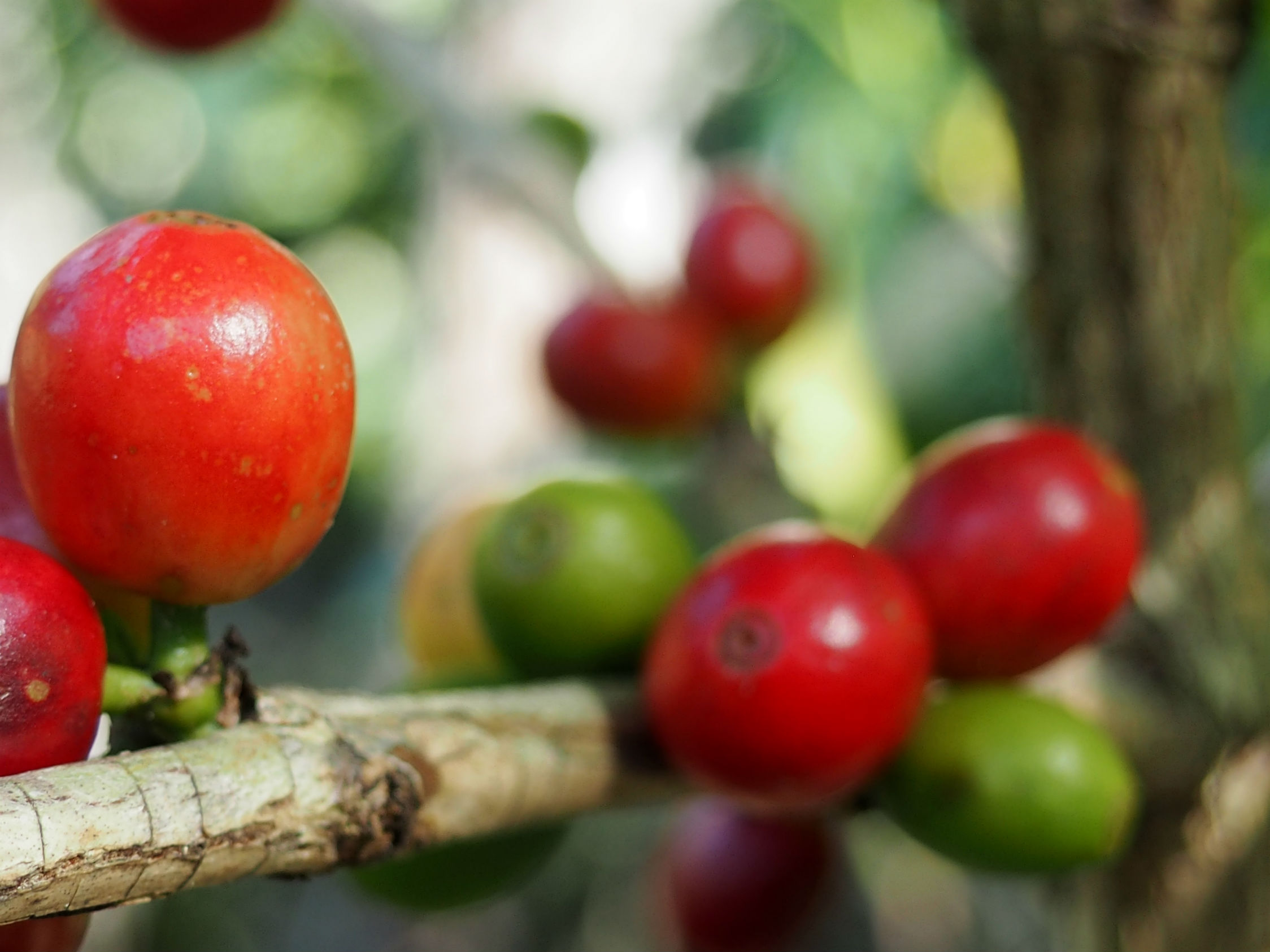Colombia San Agustín Gabriel Muñoz Shade Dried Gesha Crown Jewel
Boxes 0
Warehouses Oakland
Out of stock
intro
Intro by Chris Kornman & Mayra Orellana-Powell
This, the first harvest of 3-year old trees on Gabriel Muñoz’s Finca Los Alerces, comes to us at a delightfully reasonable price point, an entry-level Gesha for the curious, and a special coffee in its own right. One of the reasons for its lower price is that It comes from trees just three years old, not yet mature enough to produce the vibrancy of flavor commonly associated with more established trees.
Gabriel Muñoz approached his exporter with an exploratory question: what price would be fair for this coffee? The Gesha cultivar still turns heads, but it takes something truly exceptional to reach the double and triple figures per pound that were once the expectation. This coffee comes to us at a (relatively) low price, one that covers the costs of the producer with enough left over to reinvest for the future, but won’t cause sticker shock for the roaster.
Producer Gabriel Muñoz intercropped his 2.5 acres of coffee with Hass avocados (the trees provide shade and a significant source of agricultural income in their own right). He runs the farm with the help of his wife; together they have two daughters they support.
Gabriel has his own micro-mill where he carefully harvests cherries, then hand sorts and floats them to remove damaged and less dense beans before depulping and fermenting for 36 hours. After this, he washes the coffee to remove the mucilage and then gently dries it on raised beds over a period of 3 weeks — quite a long time period and one that speaks to high potential shelf-life and good moisture and water activity care.
While Gabriel has designed farm management and post-harvest solutions to fit his needs, he also has a strong alliance to bring his coffee to the international market and earn fair prices. He has partnered with an exporting company called San Miguel, a family owned company based in Huila that focuses on bringing traceable individual farmer micro-lots to the international market. The partnership has helped Gabriel increase earnings from coffee sales, which means he can reinvest in his farm and strengthen his family’s livelihood.
This small harvest, just a shade over a thousand pounds in total, has loads of potential, and we’re excited to release it exclusively as a Crown Jewel. The coffee is sweet, tea-like in body with gardenia and rose-like floral notes. Cacao nib, coconut water, melon and kumquat flavors round the experience, and the finish is subtly pistachio-like. It’s a unique coffee, perhaps not for everyone, but we do love it and look forward to sharing it with you, either as green coffee or (if you plan to swing by The Crown) as a pourover.
green
Green Analysis by Chris Kornman
Higher than average density here is paired with nice-looking moisture and water activity figures indicating good drying practices at the farm. The longish shape of the Gesha cultivar’s seeds presents as slightly larger than average in screen size, mostly 16+ here with a good portion falling in the 17-18 range.
Gesha’s story is well known, having made its way from selections in western Ethiopia in the 1930s to Central America by the 1950s and 60s, before being recognized for its quality potential on the Petersons’ coffee farm, Hacienda La Esmeralda, in 2004. The tree was in fact first prized for its resistance to rust (a status which it has since lost), and multiple collections were made. The reference sample from CATIE’s original 1953 collection (labelled T2722) is not a perfect match to many trees now labelled “Ge(i)sha” in the field (undoubtedly at least partly related to its selection from the heart of coffee’s genetic diversity). It seems likely that the cultivar’s genetic diversity, combined with its explosion of popularity over the last 15 years, contributes to a broadening range of flavor profiles and qualities.
taste
ikawa
Ikawa Analysis by Chris Kornman
We’ve updated our V2 Ikawa Pro machines with the latest Firmware version (24) and run on “closed loop” setting. Our roasters underwent full service in October of 2018 which included replacement heating elements and an updated PT 1000 temperature sensor, and were recalibrated in September 2019.
The 6-minute Ikawa profile here worked fairly well for this Gesha, allowing for some nice gardenia and lemon verbena flavors accented by melon, papaya, tangerine, sweet pastry, and bittersweet chocolate.
You can download the profile to your Ikawa Pro app here:
Roast 1: Crown 6m NatEth ck1.4
probatino
Roast Analysis by Candice Madison
Sr Muñoz has produced a coffee that is definitely one to play with in the roaster. Its flavor profile changes quite noticeably, but equally deliciously with each parameter change. The first sample roast I tasted of this coffee presented lots of tropical fruit notes. This Probatino roast, however, gave lots of florals and sweet tea notes. A dense coffee, to be sure, but it didn’t need as much energy as I thought when approaching it.
After an initial rise from 2 – 3 on the gas dial at the turning point, I proceeded through the color change at the same pace until 319, when I turned the gas down slightly to 2.5. At the very first pop, I turned the gas all the way down to 2 and waited for first crack to start rolling before turning the gas back up to 2.5. To be honest I should have kept the gas low, as the coffee took off far faster than I realised and pushed its way to a 20% development slice of the whole roast pie. This longer post-crack development translated into a sweeter, smoother cup than I’d been going for. With that initial steep ascent after the turn, I was hoping to taste more of the complex and distinct fruit flavors, and achieve a more sparkling acidity.
What the coffee lost in articulation, it made up for in sweetness and body. At the table we found the coffee to have a noticeably creamy, velvety, body. This body supported the floral notes of hibiscus, accompanied by vanilla, peach, pear, stone fruit, all neatly held together by a deliciously deep rooibos tea flavor. Really lovely, I’d be willing to wait for a pour over, but I wouldn’t be mad at you if you decided to batch brew this beauty!
quest m3s
Quest M3s Analysis by Evan Gilman
Unless otherwise noted, I follow a set standard of operations for all my Quest roasts. Generally, I’ll allow the machine to warm up for 15 minutes until my environmental temperature reading is at least 250F, weigh out 150g batch size, and begin roasting when I’ve reached my desired charge temperature. Read my initial post here and my updated post here.
This week brought us four very dense coffees from Colombia. Gabriel Muñoz brought us an atypical Gesha coffee – and we’ll see just how atypical in a moment. This may be only the second Gesha I have ever roasted on the Quest M3s, and the other was not a Crown Jewel, but rather a direct trade coffee hailing from Panama. That is to say, this was a new experience for me.
Since this coffee was so dense, I decided to hit it with a lot of heat right from the get go. Keeping my heat application at 9.5A, I charged 125g of this coffee at 390F – slightly high for the Quest, but not outside of the usual. The difference in my approach to this coffee began early.
This coffee took on heat so readily that my Turning Point was roughly 20 degrees higher than most of my roasts! I was certainly not expecting this, and increased my fan speed to 4 at 2:00 / 275F. How could I be nearing Maillard already at 2 minutes!? I increased the fan speed to full at 3:30 / 348F, as the coffee was still screaming through Maillard. I dropped heat application to 7.5A at 4:00 / 365F, and further to 0A at 4:24 / 380F. I dropped the coffee at 5:44 / 406F – way faster than I am comfortable with. Most of my roast was spent in Drying Stage, but I somehow got a respectable 19.2% development. To be honest, I was pretty scared to approach the cupping table with this roast on it, but as it turns out, I wasn’t too disappointed.
We found apricot, lemon, lime, gentle rose florals, and a distinct oolong tea note. The coffee was, to my palate, clearly roasted too quickly. Nobody turned up their nose at the cup, though, so I had that going for me. We all saw the great potential in this coffee. Sr Muñoz’s coffee is clearly very flexible and open to interpretation in the roast chamber!
From what I understand, Candice also experienced oddities with her roast of this coffee, so I’d caution home roasters to please go gently into that dark roast. You won’t need very vigorous heat application to get this coffee into first crack, but it’s bound to be delicious even if you do get there a little faster than normal.
brew
Brew Analysis by Alex Taylor
What a way to start off the new year! Four new Crown Jewels in our first week back at it, and all of them delicious coffees from Colombia. Rather than working on completely different brews and methods for each of these four coffees, I decided to pick two brew recipes and follow them for all four CJ’s, hopefully allowing more of the nuance between these coffees to shine through for you. You can find the analysis for this week’s other additions on their respective pages, CJ1323, CJ1324, and CJ1326. But for now, back to this selection from Gabriel Muñoz.
I wanted to give the coffee the opportunity to show its different sides, so I planned for one brew via a pourover (a v60 in this case), and another on the Aeropress. It’s been a minute since I last brewed on an Aeropress, but my warm-up brews were encouraging, so I stuck with it. I’m hoping to include more brews on the Aeropress and other immersion or hybrid brewers this year, for diversity’s sake. I could brew and write about conical pour-over brews until I’m blue in the face, but Crown Jewel analysis isn’t for me, it’s for you! Anyway…
It’s been awhile since we had a Gesha roll through the Crown Jewel pipeline, and especially after tasting this coffee on the cupping table a few times, I was excited. A Colombia with the black tea and floral notes that make you think of a washed Ethiopia? Sign me up! As we tasted the v60 brew for this coffee, I saw the eyes of my fellow baristas start to light up. Lavender, lemon zest, white peach, honeycomb, earl grey tea, and vanilla kicked things off, with plenty of notes of fresh flowers, and a slightly divisive (love it or hate it) minty, cooling finish. I really loved this brew! The Aeropress brew was even more impressive though! We tasted super intense notes of lavender, vanilla and black cherry, with a medley of everything from pineapple and blood orange to butterscotch and whisky. It was hard to make sense of this brew, but it was undeniably delicious!




